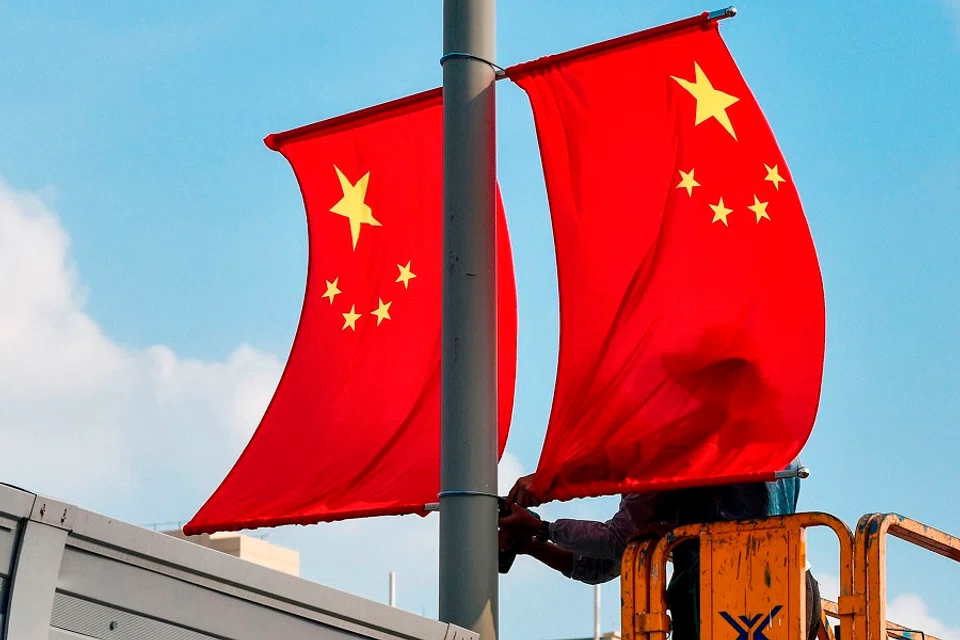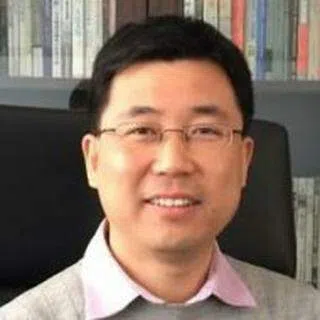China's next Five-Year Plan focuses on security, stability and quality of development; adopts a more subdued tone
Amid the pandemic, US elections and intensifying geopolitical tensions around the globe, China's recently-released communique of the fifth plenary session of the 19th Central Committee of the Chinese Communist Party (CCP) drew much attention. What does this 14th Five-Year Plan say about China's development trajectory and its focus for the next five years? How has it changed given the new global situation? EAI academic Qi Dongtao dissects the document.

China's recently-released communique of the fifth plenary session of the 19th Central Committee of the Chinese Communist Party (CCP) drew much attention not only because it contains proposals for China's 14th Five-Year Plan, but also because people are curious to know how Beijing will address the unprecedented internal and external challenges that China is facing.
Following over 40 years of reform and opening up, China has accumulated substantial capital and experience across various industries. Its ability to resolve challenges has greatly improved, and its regional and even global influence has grown to the point where many countries are wary of its rise and the Trump administration is even waging a "new Cold War" against the country. Hence, people are waiting to see if Beijing's recent "aggressive" international strategies would continue in the next five years, and are even more curious to know what Beijing's next steps will be in dealing with Taiwan following the latter's cooperation with the US in challenging the mainland over the past few years.

A simple comparison between this year's communique and the one released five years ago in 2015 on the 13th Five-Year Plan shows China's new approaches to dealing with issues, including those involving Taiwan.
A greater focus on the 'quality of development'
Five years ago, both China's pace of internal development and level of external influence were rapidly increasing. Domestically, although China's GDP growth rate in 2015 slowed, it still increased by a whopping 7%. Morale-boosting anti-corruption efforts were also at their peak then; the communique even listed the names of corrupt "tigers" who had been arrested.
Thus, when Beijing released the 13th Five-Year Plan in 2015, confident, proud, and even somewhat egotistical slogans like "Amazing China" were seen across the country.
On the external front, the Belt and Road Initiative (BRI) was officially launched in 2015, marking the beginning of China's influence on participating countries of the BRI. As Donald Trump and Tsai Ing-wen had not become the US and Taiwan presidents respectively back then, the US and Taiwan were not threats to the mainland yet. Following the 2014 Hong Kong protests (Occupy Central), while political tension in Hong Kong had not subsided, societal unrest and protests had temporarily eased. Thus, when Beijing released the 13th Five-Year Plan in 2015, confident, proud, and even somewhat egotistical slogans like "Amazing China" were seen across the country.

The situation today speaks for itself and does not need further explanation. Hit by the pandemic, China's economic growth has taken a beating. Nonetheless, it will still be the only country to maintain a positive growth rate among the major economies of the world. While China's successful containment of the pandemic has secured the stability of its domestic production, destabilising external variables have greatly increased. These variables include strategic competition with the US; Taiwan President Tsai's re-election and Taiwan's increased cooperation with the US in challenging the "one-China" policy; and the rebuilding of Hong Kong under the national security law following the Hong Kong protests.
Comparing both communiques released five years apart, it seems that the domestic and external challenges mentioned above will have a great impact on Beijing's future plans. The main thrust of the 13th Five-Year Plan was development, as seen in the statement: "We must... proactively adapt to, understand, and guide the new normal in economic development, and comprehensively advance innovative, coordinated, green, open, and shared development so as to ensure that a moderately prosperous society is established in all respects."
The communique was also structured according to the five development goals. It further said that development was the topmost priority of the party in rejuvenating the country and that party members at all levels should deepen their understanding of how development works, so as to better lead the nation in economic and social development efforts.
In comparison, the proposals for the 14th Five-Year Plan do not focus on development but rather on the quality of development in all aspects.

In comparison, the proposals for the 14th Five-Year Plan do not focus on development but rather on the quality of development in all aspects. For example, while the Chinese word for "development" (发展) appeared 95 times in the 13th Five-Year Plan proposals, it only appears 77 times in the proposals for the 14th Five-Year Plan. On the other hand, the Chinese word for "quality" (质量) only appeared a total of five times in the 13th Five-Year Plan but 16 times in the 14th Five-Year Plan. This reflects Beijing's shift from emphasising the pace of development to the quality of development.
Security, stability and military strength also emphasised
Another difference is that the proposals for the 14th Five-Year Plan focus more on "security" (安全) and "stability" (稳定), as the words appear a total of 22 times and nine times respectively. In comparison, "security" and "stability" only appeared 13 times and three times respectively in the recommendations for the 13th Five-Year Plan.
Another change is the more modest wording in the latest communique.
In addition, this communique focuses more on military strength - "military" (军) appears 18 times, as compared to only four times in the previous communique five years ago. The focus on security, stability, and military affairs reflects Beijing's growing attention to challenges and risks and increasing emphasis on "security development", for instance as seen in these lines: "Taking into account development and security... integrating security development in the various aspects and processes of national development, to prevent and resolve various risks affecting China's modernisation and strengthen national security barriers. In addition, to strengthen national security capabilities so as to ensure national economic security, protect people's lives and safety, and maintain social stability and security."

Another change is the more modest wording in the latest communique. Five years ago, it was mentioned that "China remains in an important period of strategic opportunity for achieving significant development", but the latest communique only says "a key strategic period of opportunity"; five years ago, it was to "seek a greater say in the institutions for global economic governance"; this time, it is about "actively participating in the reform of the global economic governance system".
Five years ago, there was Made in China 2025 (中国制造2025); there is no mention of this in the latest communique. In recent years, there have been increasingly strong international accusations that China is exerting undue influence on some countries, including using economic measures to achieve political aims and "wolf-warrior" diplomacy. The more modest expressions in the latest communique seem to be an effort to ease such accusations.
Overall, the 14th Five-year Plan proposals are more focused on quality rather than speed of development, and on security and stability. It highlights building up military strength to safeguard national sovereignty, security, and interests, with a more low-key international profile. All these are adjustments by Beijing in the face of new domestic and international challenges.
Barely any mention of Taiwan
Interestingly, Taiwan was mentioned twice in the plan five years ago, but not once this year. Also, the Taiwan issue took up about 40 Chinese characters last time, which mentioned deepening mutually beneficial economic cross-strait cooperation to benefit more Taiwanese people and businesses; this time, only 15 Chinese characters were given to Taiwan related issue, which spoke of peaceful cross-strait relations and unification with the motherland. Why did Taiwan "disappear" from the latest communique? Why is there no firm policy direction on the Taiwan issue in the latest plan, as there was previously?

With the increasingly strong joint challenge from the US and Taiwan, perhaps Beijing is still considering its policy on Taiwan over the next five years. This is especially because the communique was released before the results of the US presidential election are out, which means the US policy towards Taiwan may change, and so Beijing is holding its moves until the situation becomes clearer. On the other hand, this treatment of the Taiwan issue in the communique also exerts a sort of "silent pressure" on Taipei, so that Taipei cannot really tell how Beijing's policy towards Taiwan has changed, which means it will have to move more carefully.
Finally, the past two five-year plans in 2010 and 2015 were made during Ma Ying-jeou's leadership of Taiwan, where cross-strait relations were at their best and greater cooperation was the obvious way to go. But now, with Tsai Ing-wen in her second term and the Democratic Progressive Party government successfully handling the pandemic, popular support is high and US support for Taiwan is also growing. Thus, not only is it more difficult for the mainland to promote unification, they also do not have a foothold in terms of "anti-independence". There is a large gap between policy ideals and the reality of cross-strait relations, and it will take time to map out how to overcome this.
And so, it looks like Beijing seems to think that Hong Kong, Macau, and Taiwan are increasingly a political issue for the mainland.
Another notable change is that five years ago, the communique put Hong Kong, Macau, and Taiwan under a section about "all-around opening up", while it is found in the last part of this latest communique, which emphasises the leadership, unity, and political framework of the party. Putting Hong Kong, Macau, and Taiwan in this section gives the impression that Beijing no longer sees these entities' relationship with the mainland from the perspective of open development, but from a political perspective.
And so, it looks like Beijing seems to think that Hong Kong, Macau, and Taiwan are increasingly a political issue for the mainland. Parking them under open development is no longer feasible, and the party has to get its leadership together to come up with a new solution. We look forward to the introduction of the 14th Five-year Plan, so that other countries can see the policy direction and get a better idea of how China will take its opportunities and resolve challenges in various areas.



![[Photos] Fact versus fiction: The portrayal of WWII anti-Japanese martyrs in Taiwan](https://cassette.sphdigital.com.sg/image/thinkchina/3494f8bd481870f7c65b881fd21a3fd733f573f23232376e39c532a2c7593cbc)

